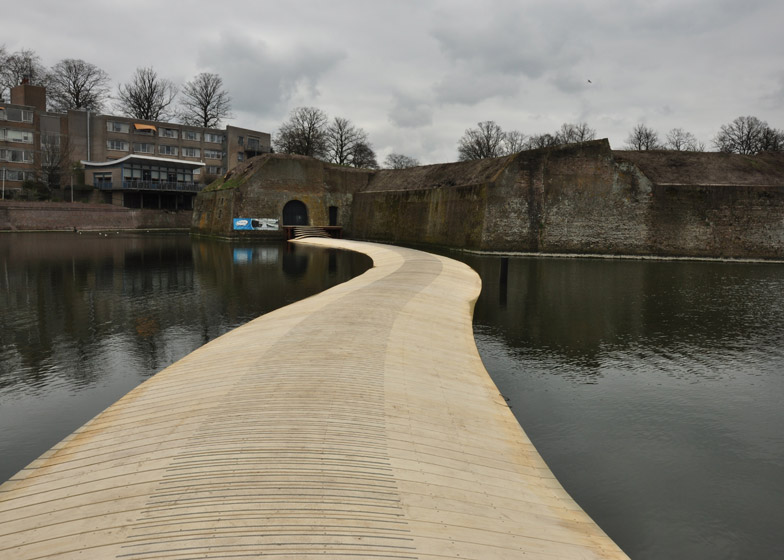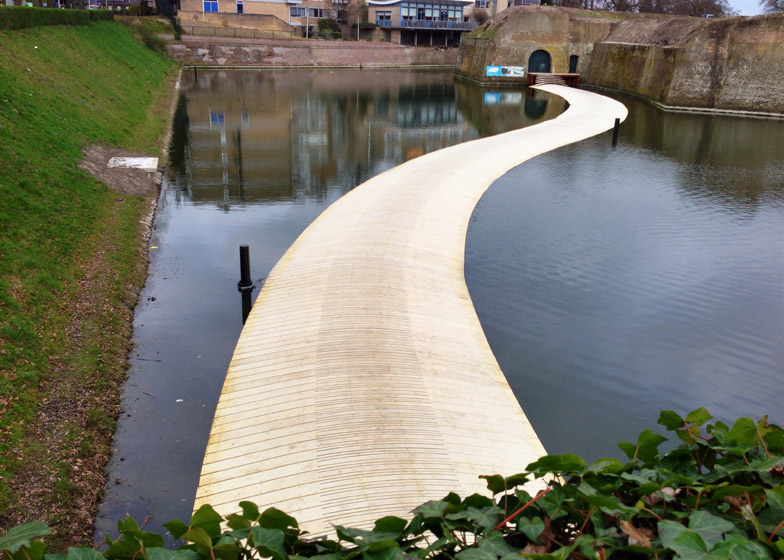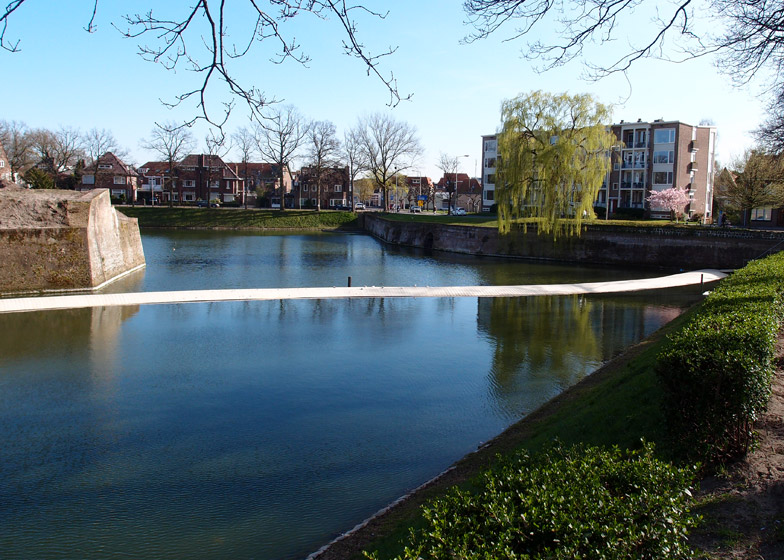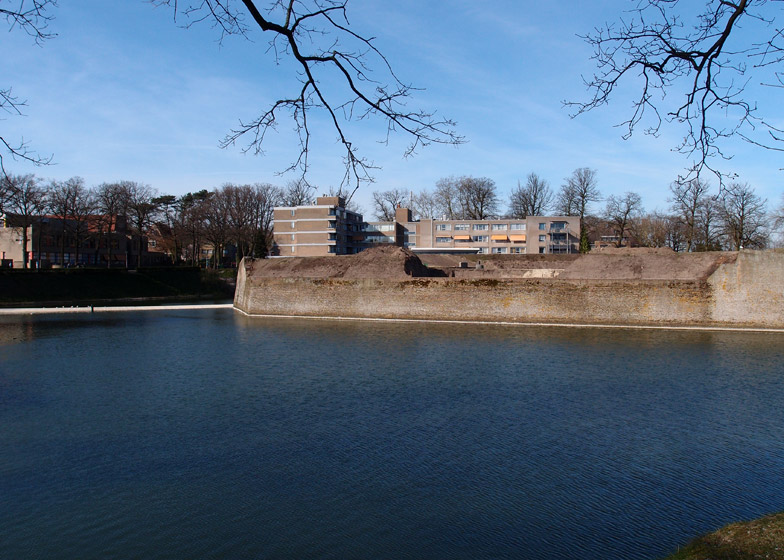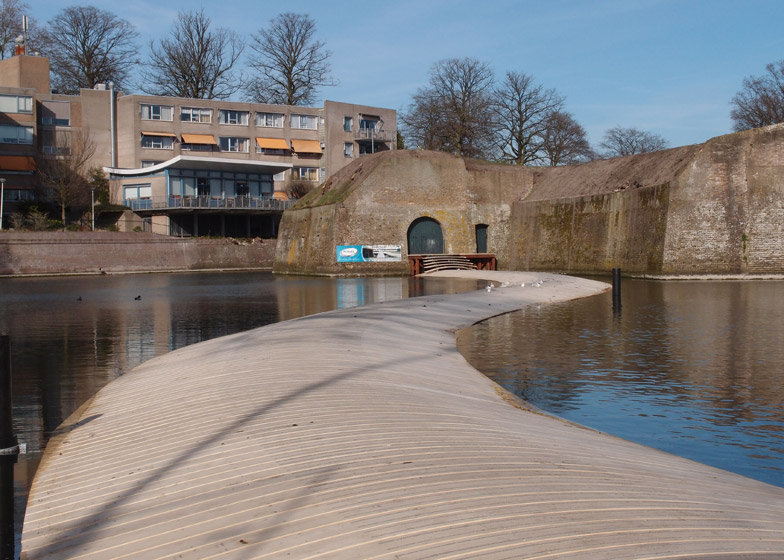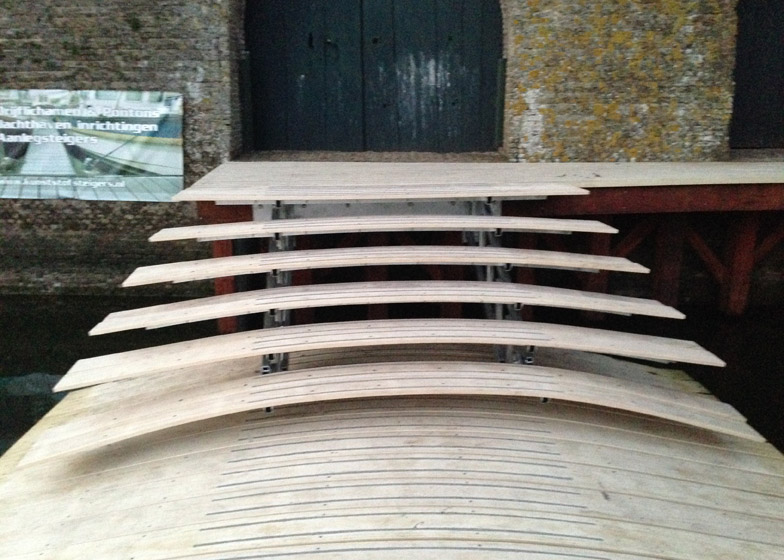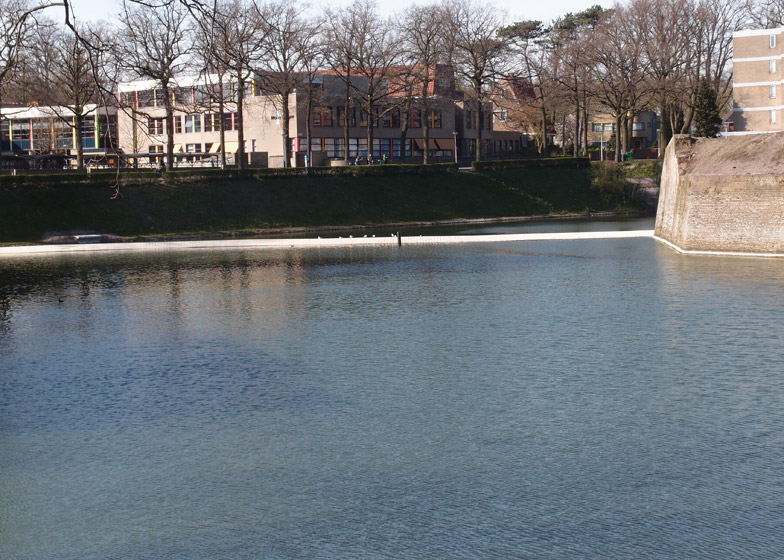This floating wooden bridge by Dutch studio RO&AD snakes across the surface of a moat surrounding an 18th-century fortress in the city of Bergen op Zoom (+ slideshow).
RO&AD designed the floating bridge to provide pedestrian access and an emergency exit between the city and the Ravelijn op den Zoom fortress, which is located on a small island and is currently used to host private events.
The architects developed a design for a new floating structure "to increase access without distracting from the historic appearance and layout."
The fortress was built by military engineer Menno van Coehoorn and had at one stage only been accessible by boat. A raised wooden bridge was added in the 1930s, but is located on the opposite side of the moat.
The new 80-metre-long bridge follows the original route boats would have taken between a jetty on the edge of the moat and a raised entrance situated in one of the fortress's walls.
A gently bowed profile raises the walkway slightly above the water level as it meanders across the moat.
The slatted surface is made from a high-performance wood product called Accoya, which is treated to improve its ability to resist fungal decay, and the effect of swelling and shrinkage that could result from its proximity to water.
"The bridge surface features a natural and beautiful appearance that complements the historic nature of the fortress," said the architects.
A wooden deck erected at the entrance to the fortress is connected to the bridge by a short set of stairs.
Air-filled polyethylene pipes positioned underneath the timber surface help keep the bridge afloat, without requiring any additional structural framework.
RO&AD previously designed a wooden bridge across the moat of a seventeenth century Dutch fort that descends below the level of the water to hide it from view.

